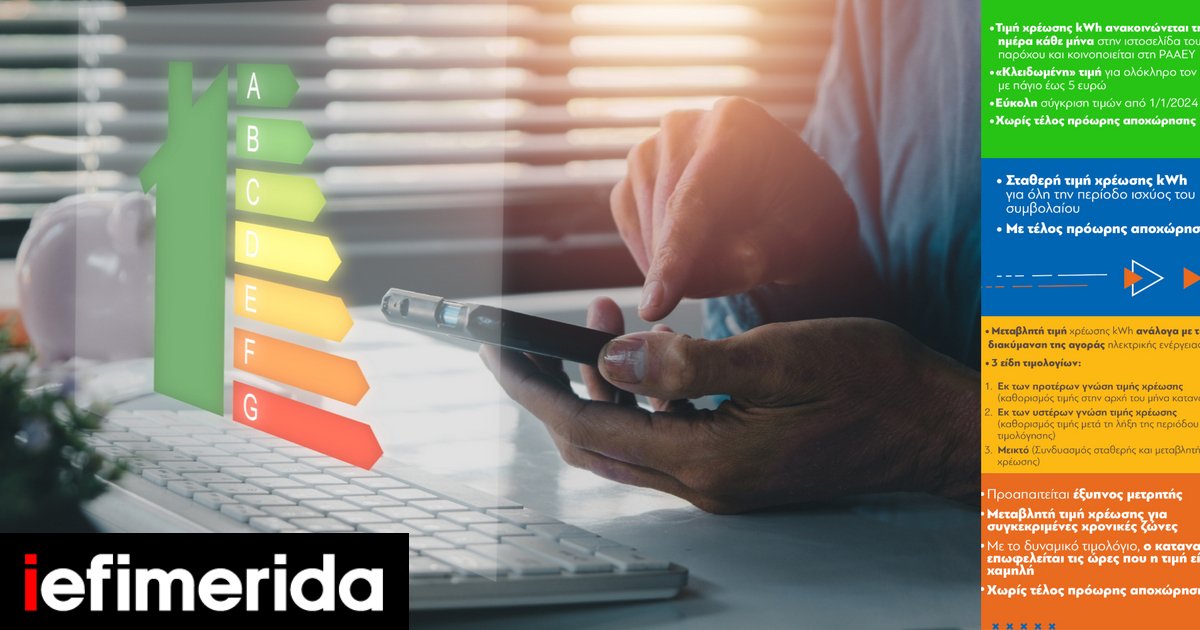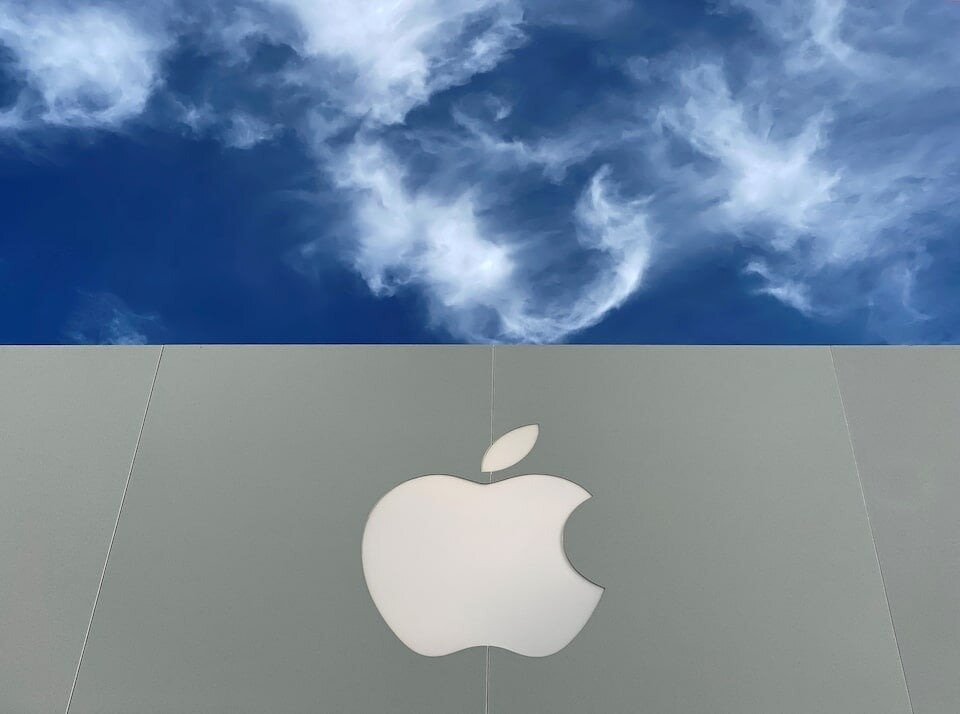
The Ministry of Environment and Energy has prepared a video about the new colored electricity tariff that will take effect from January 1, 2024.
He added: “We are introducing a unified mark on the electricity tariff for all companies, with the aim of making it easier for consumers to choose based on their needs. Our priority is the interest of the consumer,” the ministry’s website says.
New Electricity Tariff: 10 Simple Questions and Answers to Consumer Inquiries
It is noteworthy that the Ministry of Foreign Affairs began five days ago to update the new electricity tariff, which “promotes transparent and simplified information, for the benefit of consumers, about provider prices,” through 10 questions and answers.
Also, as is usually stated, “For the first time, each consumer will know exactly what he pays to his electricity provider and what type of tariff it applies, as a colored label is presented for each type of tariff (blue is fixed, green is special tariff, yellow is volatile, orange is dynamic).
Analytically:
1. Why do we have so many electricity bills?
Because service providers have the right to receive as many bills as they want. Also because the nature of the electricity purchasing system implemented by the European Union is complex. There is a wholesale market where the price fluctuates (constantly changes by the day and hour). There are retail providers, who buy wholesale and sell retail, with many different trading policies. Moreover, because the needs and desires of consumers are completely different, depending on the profile of each consumer (family, business, energy-intensive consumers, etc.).
2. What kind of definitions are there?
To begin with, there are three types of tariffs (fixed, variable and dynamic) and the consumer (whether a household or a business) chooses what they consider to be the most beneficial to them.
More specifically:
- Fixed invoices are fixed term invoices, with a fixed invoice price for the entire duration of the contract.
- Tariffs linked to the wholesale price on the energy exchange fluctuate. These are divided into two main categories: i. By setting the price in advance for the consumption period and ii. With prices yet to be determined.
- Dynamic, which refers to the possibility of dynamic pricing, at different prices – even during the day – based on market prices. One of the conditions for choosing these tariffs is the remote operation of a smart meter in the supply to consumers.
For the convenience of the consumer, bills have been linked to color. Solid blue, volatile yellow, and dynamic orange.
To these tariffs we add a special tariff, green, whose special advantage is that its structure will be simple and common, allowing comparability for all providers. All consumers will switch to this on 1 January 2024, who – during 2023 – will not choose a specific type of tariff for their switch on 1 January 2024. However, with a simple declaration to their service provider by 31/01/2024, they can stay on their previous acquaintance. Also, for any tariff changes made after that, the usual procedure is followed.
It should be noted that the special green tariff, which will be available from each provider, will be uniform for all providers.
3. Why was this special green tariff introduced?
The main advantage of the green tariff is that it facilitates, for the first time, price comparison between service providers and transparent and simplified information to consumers about service providers’ prices.
On the first day of each month, the invoice price will be announced on the website of the relevant provider and will be sent to the Financial Services Authority. The consumer will know at the beginning of the month what they will pay to their electricity provider for the following month and, more importantly, what prices are being offered by all other providers.
4. On the green bill, will the price change during the month?
No, the consumer will see the price on every first of the month, which will be “locked in” for the entire month.
5. Can the consumer choose a tariff other than the one he has?
Yes, the consumer has the ability to choose any tariff offered at any time by signing a new contract with the provider of his choice. The only exception is fixed tariffs, which by their nature have long-term contracts.
Change of supplier or supply invoice, i.e. takes place at any time and does not entail the right to compensate the supplier due to early departure of the customer, except in cases of termination of the fixed price invoice contract.
6. Why do we have different colors on invoices?
To make it easier for the consumer to understand the nature of the many different tariffs so that he can better compare tariffs between service providers.
7. Isn’t this system very “confusing”?
Yes, the European energy system is complex and it makes sense for the consumer that they do not have the time and inclination to constantly deal with any provider they choose. That is why the “green” tariff was introduced, in which he knows, without particularly participating, two basic things that interest him: firstly, what the price is next month, and secondly, who is cheaper next month.
8. Should I switch providers every month to find the cheapest one?
You have the right to do so. On the green tariff, you can track which provider is the cheapest every month, and if you are not satisfied with the provider’s prices for a month or after a few months, you can always switch. It is reasonable for the consumer not to enter into this process, because it is difficult to change providers for a difference of 1-2 euros per month. It is also logical that if he sees that someone is systematically expensive, he will leave him and go to someone who is systematically cheaper than him.
9. Why can’t I, who has a fixed blue tariff with a particular provider, compare prices with other providers?
In contrast to each provider’s own (green) bill, in the remaining tariff categories, service providers can offer more than one bill in each category, connected, several times, either to services or to other products or to a combination of them. In addition, the amount of the fixed amount can vary significantly for each provider, which reduces the degree of comparability between the energy prices offered. For these reasons, the introduction of the green tariff makes comparing tariffs of different service providers faster, easier and more transparent.
10. Will a price check and comparison tool be available?
In electricity bills (electronic and printed) and in letters and other emails that providers will send to consumers, there will now also be a QR code (scanned and read via smartphone) and a link pointing to the Waste, Energy and Water Regulatory Authority’s published price comparison tool website ( RAAEF). There, consumers will be able to view monthly the price of their provider’s own and combined tariffs and compare it with all the tariffs offered.

“Avid problem solver. Extreme social media junkie. Beer buff. Coffee guru. Internet geek. Travel ninja.”





More Stories
The opening of Nammos in Cannes and 7 other culinary creative offerings of the season will be discussed
The five ways to set aside €1,000 by the end of the month
The Indian SUV costs about the same as a Mercedes G-Class